Nathan's Travel Logs & The
Railfan's Girlfriend
Oh, Canada! (Part 2)
17-JUL-2010 to 25-JUL-2010
A trip that my girlfriend, Erin, and I took to Canada to visit her
family. We visited Toronto, Ont., Montreal, Qbc., Ottawa, Ont., and Niagara
Falls, Ont. This included visiting ExpoRail in the Montreal metro.
Tuesday,
July 20, 2010
I woke up
early this day, as I was REALLY excited that I would be finally able to
visit ExpoRail and visit the Old Port of Montreal. After having breakfast
and having Montreal-style bagels for the first time Erin, her cousin,
Chris, and I drove South of the Island (of Montreal) to St-Constant, Qbc.
to visit ExpoRail, first.
When we got
up to the ticket both, we were greeted with what Chris calls the typical
greeting in Qubec, which is "bonjour...hello." Ticket prices
are very reasonable: Families (2 adults & 2 children) for C$44; Adults
(18-64) for C$17; Seniors (65 & over) for C$14; Students (13 to 17)
for C$11; Children (4 to 12) for C$8; Toddlers (0 to 3), CRHA Members,
and Friends of the Museum for FREE. I bought everyone their ticket and
everyone was laughing at me when I was trying to pay cash, when I was
trying to figure out the coinage and bills--the bills were easy, but when
it came to the change and the loonies & toonies that is when I confused
myself. After some help from the cashier, we proceeded through the gateway
into the grounds.
On ExpoRail's
website, http://www.exporail.org,
they presented a preview of what we would expect:
Exporail’s Angus exhibit pavilion showcases 44 historic pieces
of rolling stock in a spectacular climate-controlled 90,000-square-foot
building. With a total of over 160 streetcars, interurban railway cars
and locomotives, Exporail is recognized as one of the world’s most important
railway museums – and is, bar none, the largest such collection in Canada.
The Museum presents the movie Rocky Mountain Express by Stephen
Low. The film features CPR locomotive 2816.
MTC streetcar 1959 runs every day from 10 AM to 5 pm during the
summer. The "John Molson" locomotive, a replica of 1849 steam locomotive,
is used for demonstrations on several occasion throughout the summer.
Barrington Station, an example of a rural flag stop station from
southwestern Quebec, brings visitors back to the nineteenth century.
Other vehicles from the collection are on view in the railway yard;
Visitors will frequently see railway cars and locomotives in motion.
You will feel the sensation of being in a real operating rail yard."
I was going
to REALLY enjoy today!

The main entrance to ExpoRail off of Rue St-Pierre (St. Pierre Road)

The gateway and ticket booth before entering into ExpoRail.

Looking to the right (South), after walking through the entrance, is the
right-of-way for which the trolley will take visitors around the property
and makes frequent stops to allow passengers on-and-off to further explore.

A CP-Rail doodlebug by the main building, with a cross-buck with both
French & English (Chris states that the French texts translates "Crosses
Railway")
Then we headed
into the main pavilion, which houses 44 pieces of railroad equipment on
permanent exhibit including the oldest existing steam locomotive built
in Canada; Montreal's first electric streetcar, Sir William Van Horne's
private business car and a lot of different pieces of Canadian railway
and other historical transportation equipment. The pavilion also housed
the actual CP Royal Hudson and other restored equipment. And reportedly,
the only double-observation pit in North America to be able to view the
undercarriage of both a steam and diesel-electric locomotives. The building
also has a small cafe, the museum store, meeting and presentation spaces
and a historical library.
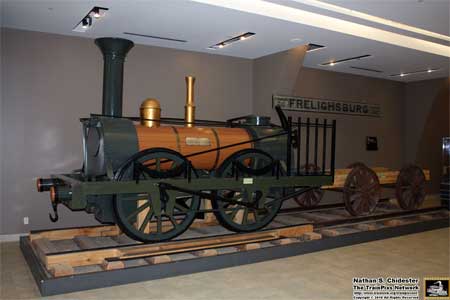
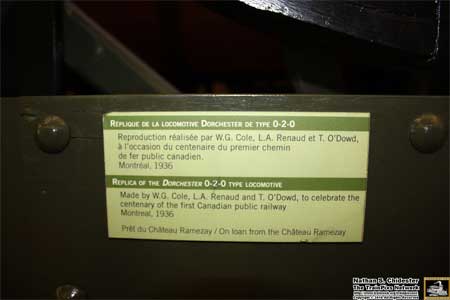
ABOVE is a replica of the Dorchester 0-2-0
type locomotive. Made by W.G. Cole, L.A. Renaud and T. O'Dowd, to celebrate
the centenary of the first Canadian public railway. Montreal, 1936. This
was on loan from the Château Ramezay. BELOW is
the marker to describe the items for visitors to know what they were looking
at, as well as it's history and/or importance in the history of Canadian
Railroading.
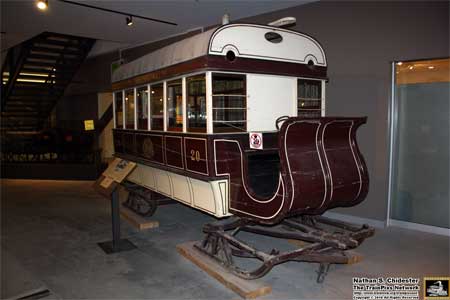
A mass transit sleigh for the Montreal area for the winters.

ExpoRail's pride-and-joy both the CPR2850, The Royal Hudson (on the left)
and CPR6765.
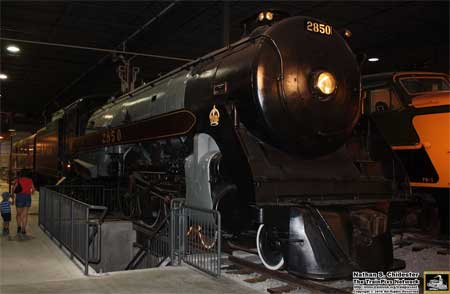
CPR2850, The Royal Hudson---In 1939, CPR2850
piloted Their Majesties King George VI and Queen Elizabeth 3224 miles
from Montreal to Vancouver without mechanical incident. Embossed crowns
were later added to the skirts of all streamlined Hudsons by Royal permission.
Because of this, all streamlined CPR Hudsons are called Royal Hudsons.
2850 was also displayed at the New York World's Fair of 1939. 2850 was
rebuilt less than a year before being donated to the museum. This locomotive
is currently kept under roof in good cosmetic condition. (Source:
SteamLocomotive.com)
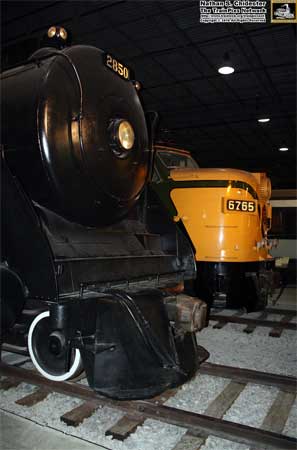
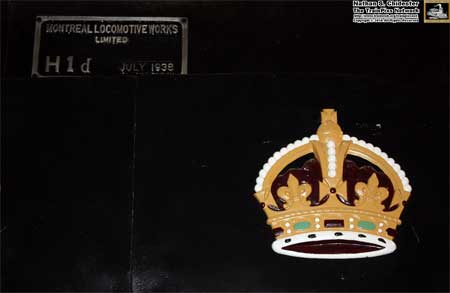
The builder's plate and the Embossed Royal Crown on CPR2850
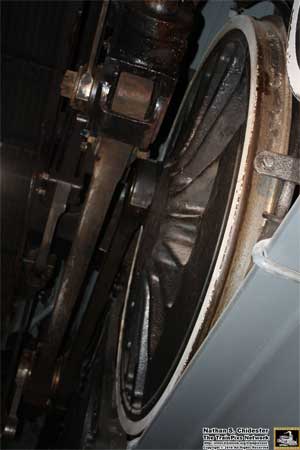
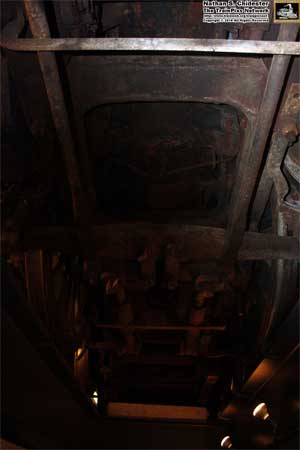
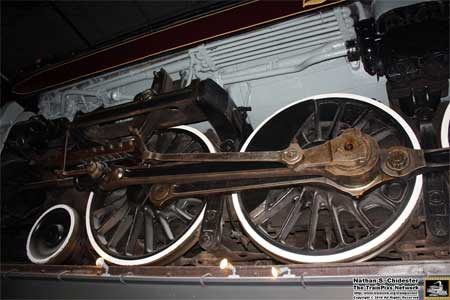
The view underneath CPR2850 [ABOVE] and CPR6765 [BELOW]
in the Observation Pit. Erin and Chris were with me and even though they
are not railfans, they too have a great time.
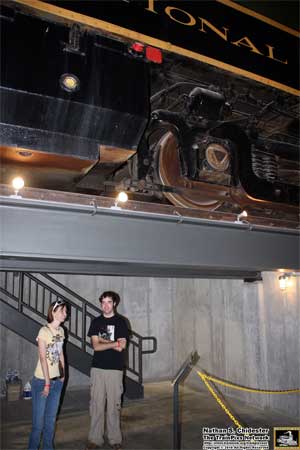
Inside the
Main Pavilion, the rows of tracks were separated in different themes.
This would include "Rails In the City," "For Economic Purposes,"
"From the Atlantic to the Pacific," "The Predominance of
the Railway," "At the Crossroads," and "The Challenges
of Railway Transportation."
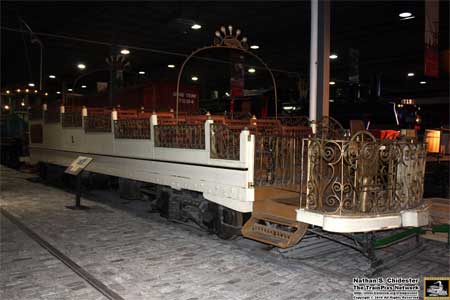
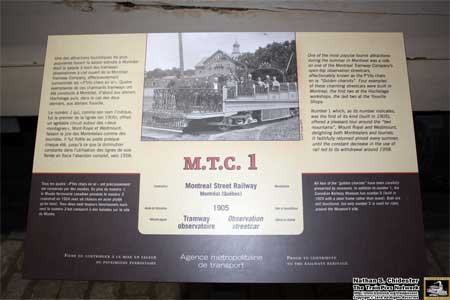
M.T.C. 1 [ABOVE], Observation streetcar, built in
1905. One of the most popular tourist attractions during the summer in
Montreal was a ride on one of the Montreal Tramway Company's open-top
observation streetcars, affectionately known as the P'tits cars en or
"Golden Cariots." Four examples of these charming streetcars were built
in Montreal, the first two at the Hochelaga workshops, the last two at
the Youville Shops.
Number
1 which, as its number indicates was the first of its kind (built in 1905)
offered a pleasant tour around the "two mountains," Mount Royal and Westmount,
delighting both Montrealers and tourists. It faithfully returned almost
every summer, until the constant decrease in the use of rail let to its
withdrawal around 1958.
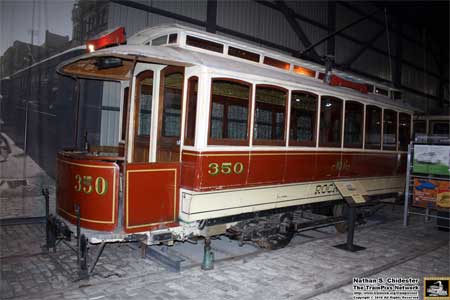
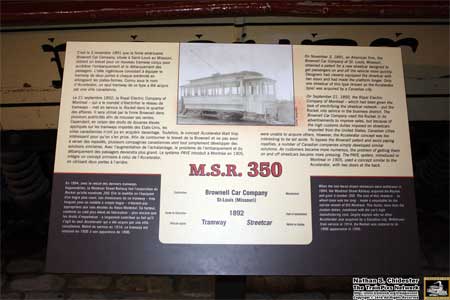
M.S.R. 350 [ABOVE], Streetcar, built 1892. On November
3, 1891, an American firm, the Brownell Car Company of St. Louis, Mo.,
obtained a patent for a new streetcar designed to get passengers on on
and off the vehicle more quickly. Designers had cleverly equipped the
streetcar with two doors and had made the platform longer. Only one streetcar
of this type (known as the Accelerator type) was acquired by the Canadian
city.
On September
21, 1892, the Royal Electric Company of Montreal -- which had been given
the task of electrifying the streetcar network -- put the Rocket into
service in the business district. The Brownell Car company used the Rocket
in its advertisements to improve sales, because of the high customs duties
imposed on streetcars imported from the United States, canadian cities
were unable to acquire others. However, the Accelerator concept was too
interesting to be set aside. To bypass the Brownell patent and avoid paying
royalties, a number of canadian companies simply developed similar solutions.
As customers became more numerous, the problem of getting them on and
off streetcars became more pressings. The PAYE system, introduced in Montreal
in 1905, used a concept similar to the Accelerator, with two doors at
the back.
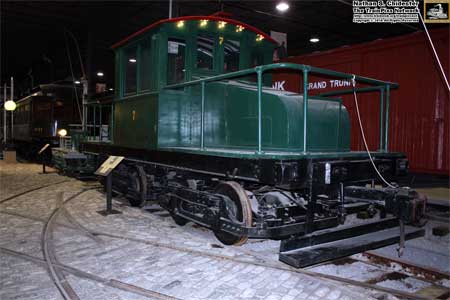
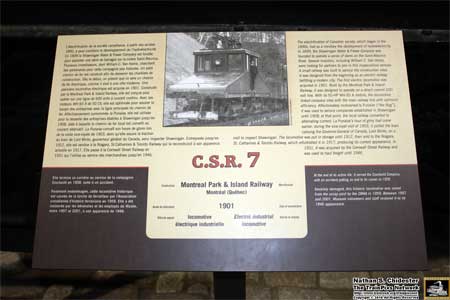
C.S.R. 7, Electric Industrial Locomotive [ABOVE],
built in 1901. The electrification of canadian society, which began in
the 1890s, had a corollary the development of hydroelectricity. In 1899,
the Shawinigan Water & Power Company was founded to operate a series of
dams on the Saint-Maurice River. Several investors, including William
C. Van Horne, were looking for partners to join in this impecunious venture.
A small railway was built to service the construction sites. It was designed
from the beginning as an electric railway befitting a modern city. The
first electric locomotive was acquired in 1901. Built by the Montreal
Park & Island Railway, it was designed to operate on a direct current
600-volt line. With its 50-HP WH-93 A motors, the locomotive linked company
sites with the main railway line with optimum efficiency. Affectionately
nicknamed la Punaise ("the Bug"), it was used to service companies established
in Shawinigan until 1908; at that point, the local railway converted to
alternating current. La Punaise's hour of glory had come earlier; during
the vice-royal visit of 1903, it pulled the trains carrying the Governor-General
of Canada, Lor Minto, on a visit to inspect Shawinigan. The locomotive
was put in storage until 1912, then sold to the Niagara, St. Catharines
& Toronto Railway, which refurbished it in 1917, producing its current
appearance. In 1931, it was acquired by the Cornwall Street Railway and
was used to haul freight until 1946.
At the
end of its active life, it served the Courtauld Company, with an accident
putting an end to its career in 1958. Severely damaged, this historic
locomotive was saved from the scrap-yard by the CRHA in 1959. Between
1997 and 2001, Museum volunteers and staff restored it to is 1946 appearance.

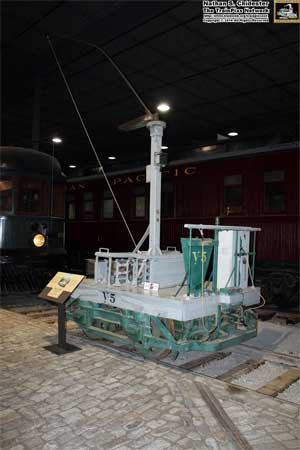
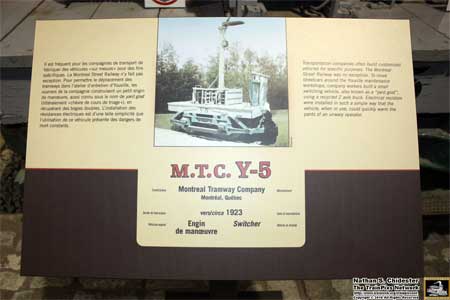
Montreal
Tramway Company Y-5 [LEFT], Transportation companies
often build customized vehicles for specific purposes. The Montreal Street
Railway was no exception. To move streetcars around the Youville maintenance
workshops, company workers built a small switching vehicle, also known
as a "yard goat," using a recycled 2 axle truck. Electrical
resistors were installed in such a simple way that the vehicle, when in
use, could quickly warm the pants of an unwary operator.

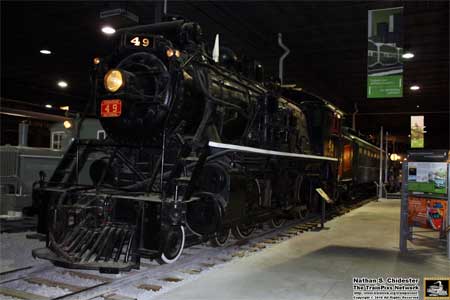
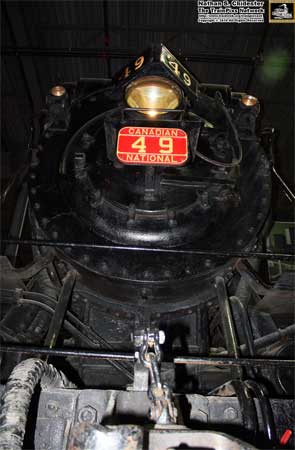
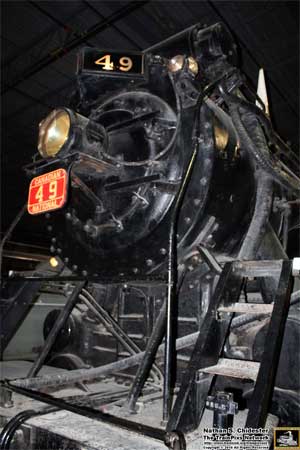

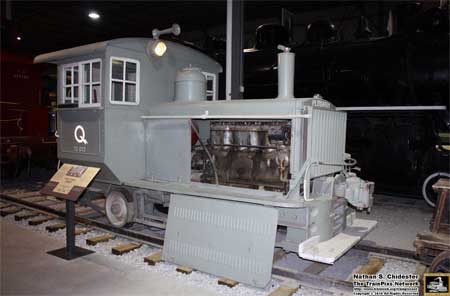
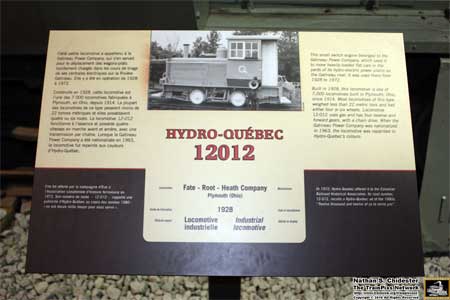
Hydro-Quebec 12012 [ABOVE]--this small switch engine
belonged to the Gatineau Power Company, which used it to move havily-loaded
flat cars in the yards of its hydro-electric power plants on the Gatineau
river. It was used there from 1928 to 1972.
Built in
1928, this locomotive is one of 7,000 locomotives built in Plymouth, Ohio,
since 1914. Most locomotives of this type weighted less than 22 metric
tons and had either four or six wheels. Locomotive 12-012 uses gas and
has four reverse and forward gears, with a chain drive. When the gatineau
Power Company was nationalized in 1963, the locomotive was repainted in
Hydro-Quebec's colors.
In 1972,
Hydro-Quebec offered it to the Canadian Railroad Historical Association.
Its road number, 12-012, recalls a Hydro-Quebec ad of the 1980s: "Twelve
thousand and twelve of use to serve you."

On the inscription in the center of this mallet [ABOVE],
it reads: "MALLET used by H.R.M Albert Edward, Prince of Wales
[later known as H.R.M. King Edward VII], in laying the last stone which
completed the masonry of the Victoria Bridge. MONTREAL, 25 Aug. 1860."
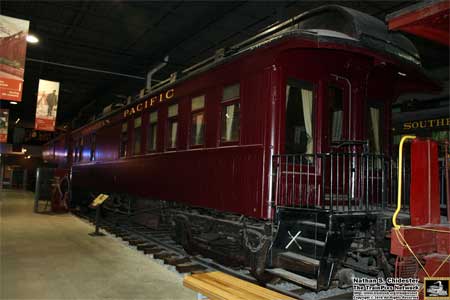
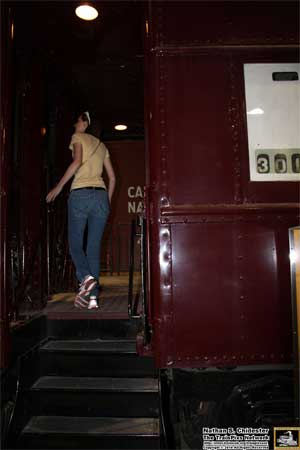
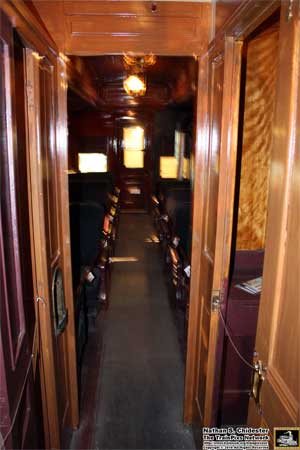
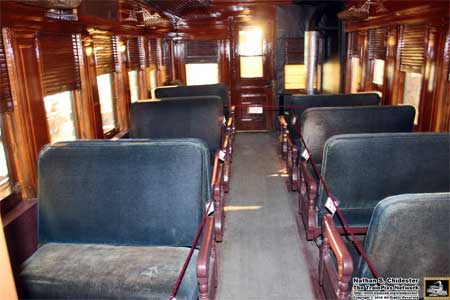
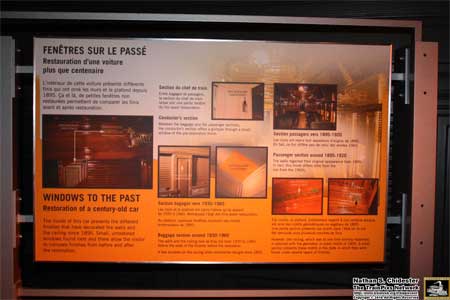
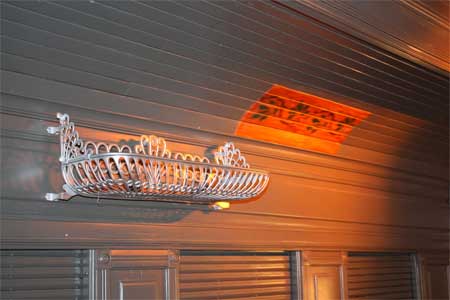
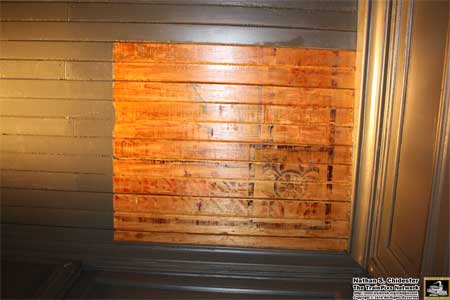
While at the museum, we were able to tour a number of restored passenger
cars, engines and other rolling stock. Throughout each of the different
cars and other rolling stock, they provided examples of restoration as
well as beautiful drawings/plans of the unrestored areas [ABOVE
THREE ROWS].


My girlfriend, Erin, posing for the camera on one of the pieces of
rolling stock [ABOVE LEFT] which has been restored by
the museum. Erin, who was born in Canada and is also a HUGE hockey fan,
poses in front of a display [ABOVE RIGHT] talking about
how Montreal's hockey team and fans traveled to the other cities in their
league, prior to air travel became the popular way to travel from place
to place.


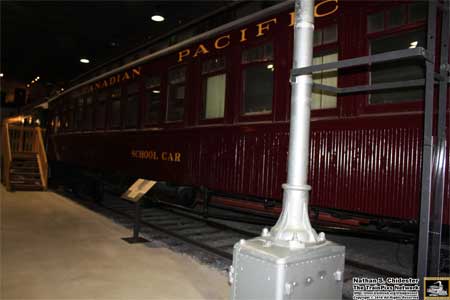
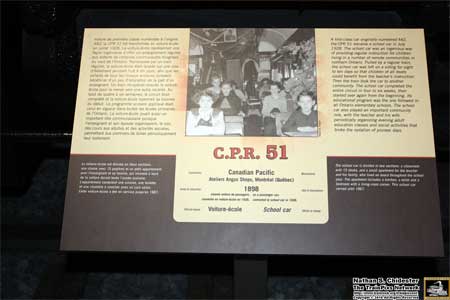
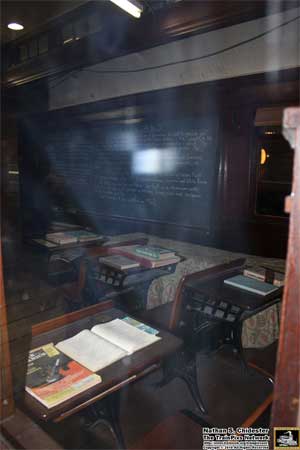
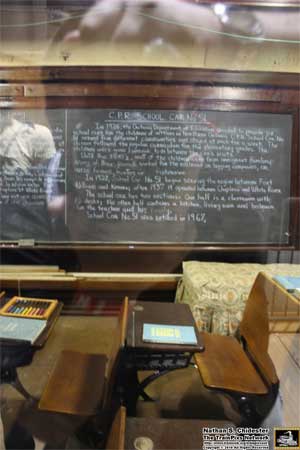
C.P.R. 51, built 1898 by canadian Pacific at the Ateliers Angus Shops,
Montreal, Quebec. [ABOVE TWO ROWS] A first-class car
originally numbered 442, the CPR 51 became a school car was an ingenious
way of providing regular instruction for children living in a number of
remote communities in northern Ontariro. Pulled by a regular train, the
school car was left on a siding for eight to ten days so that children
of all levels could benefit from the teacher's instruction. Then the train
took the car to another community. The school car completed the entire
circuit in four to six weeks, then started over again from the beginning.
Its educational program was the one followed in all Ontario elementary
schools. The school car also played an important community role, with
the teacher and his wife periodically organizing evening adult education
classes and social activities that broke the isolation of pioneer days.
The school
car is divided in two sections: a classroom with 15 desks, and a small
apartment for the teach and his family, who lived on board throughout
the school year. The apartment includes a kitchen, a toilet and a bedroom
with a living-room corner. This school car served until 1967.

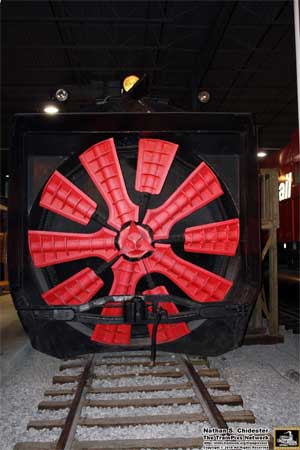
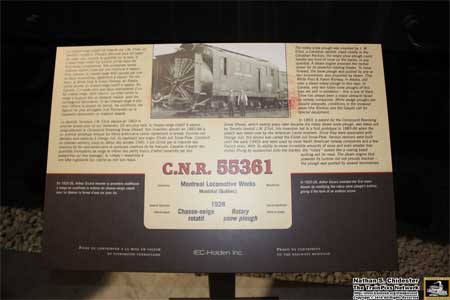
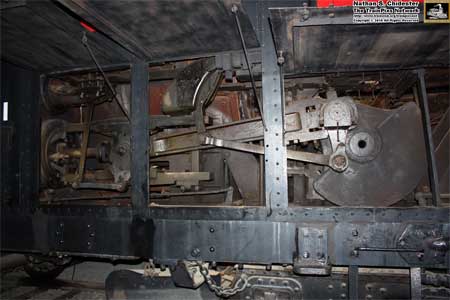
C.N.R. 55361, a rotary snow plow, built by the Montreal (Quebec) Locomotive
Works in 1928 [ABOVE TWO ROWS]. The rotary snow plow
was invented by J.W. Elliot, a Canadian dentist. Used chiefly in the Canadian
Rockies, the rotary snow plow could handle any kind of snow on the tracks,
in any quantity. A steam engine provided the motive power for its powerful
rotating blades. To move forward, the snow plow was pushed by on or two
locomotives, also propelled by steam. (The White Pass & Yukon railway,
in Alaska, still uses a steam rotary plow to this day.) In Canada, only
two rotary snow plows of this type are still in existence--this is one
of them. Snow has always been a major obstacle faced by railway companies.
While wedge plows are usually adequate, conditions in the snowiest areas
(the Rockies and the Gaspe) call for special equipment.
In 1869,
a patent for the Compound Revolving Snow Shovel, which twenty years later
became the rotary steam snow plow, was taken out by Toronto dentist J.W.
Elliot. his invention led to the first prototype in 1883-84 when the patent
was taken over by the American Leslie brothers. Since they were associated
with Orange Jull, the device was called the Elliott-Jull Snow-Plow. Various
versions were built until the early 1940s and were used by most North
American railway companies and a few French ones. With its ability to
move incredible amounts of snow and even smaller tree trunks (flung by
avalanches onto the tracks), the "rotary" looked like a roaring beast
spitting out its meal. The steam engine that powered its turbine did not
provide traction--the plow was pushed by several locomotives.
After looking
at all of the railroad equipment and displays inside the main pavilion,
we walked outside to the other displays on the grounds, take trolley ride
and see some other historical pieces of equipment that the museum has
on display.
«
« GO BACK TO PREVIOUS PAGE « « »
» CONTINUE TO NEXT PAGE » »